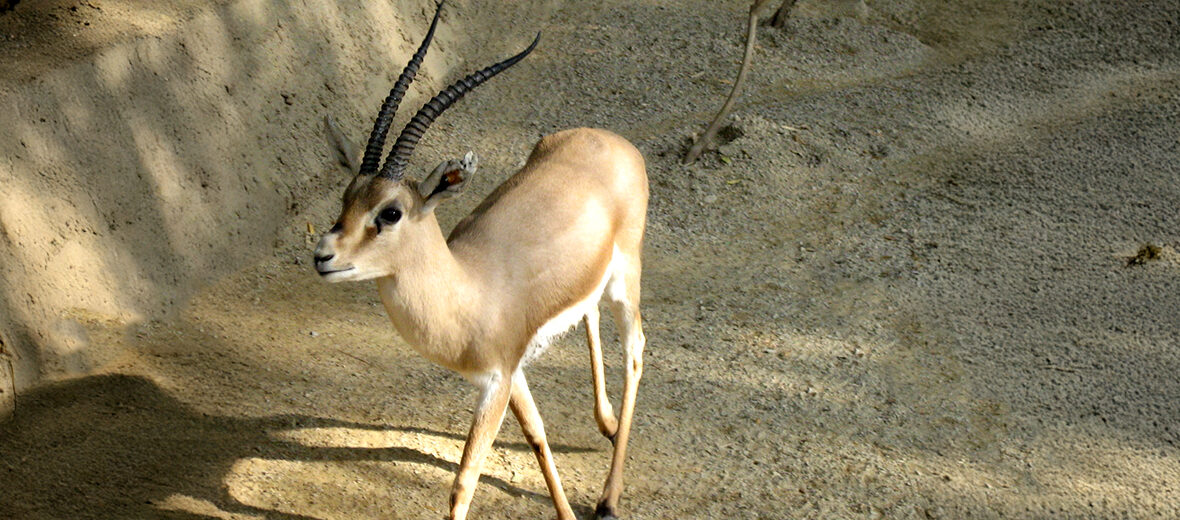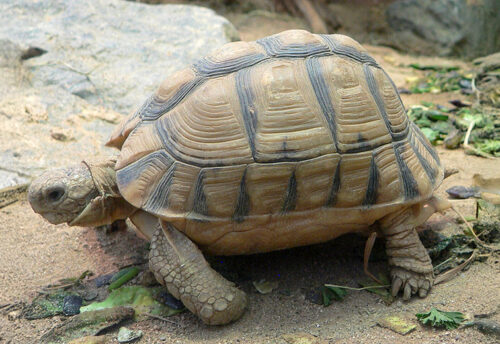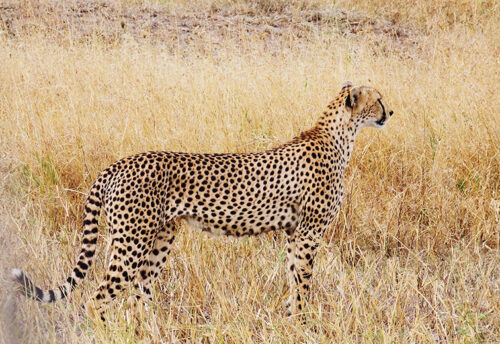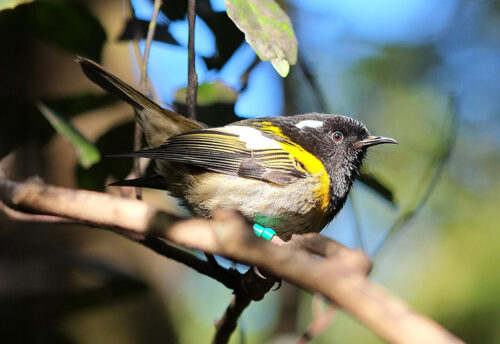
The rhim gazelle, aka slender-horned gazelle, African sand gazelle, or Loder’s gazelle, is a rapidly diminishing species of gazelle that hails from Africa. These diminutive critters face the threats of habitat loss and destruction at the hands of farming and ranching; hunting; trapping; and climate change, that can cause severe droughts. The IUCN lists these gazelles as Endangered and Critically Depleted. Their population trend is listed as decreasing.
First the Stats…
Scientific name: Gazella leptoceros
Weight: Up to 66 lbs.
Length: Up to 46 inches, plus up to a 6 inch tail
Height: Up to 28.8 inches, at the shoulders
Lifespan: Up to 14+ years
Now on to the Facts!
1.) They are primarily found in Algeria, Egypt, Tunisia, and Libya, & possibly Chad, Mali, Niger, as well as Sudan.
2.) Even though they were originally described and named by Frédéric Cuvier in 1842, these gazelles were rediscovered by Edmund Giles Loder later in that same century, hence the synonym Gazella loderi and the common name Loder’s gazelle.
3.) The horns on males are slender and slightly S-shaped, while those of the females are thinner, lighter, and mostly straight.
4.) Due to the extreme temperatures of their habitats, these critters are mostly crepuscular (active at dawn and dusk).
5.) They can obtain most of their moisture requirements from the dew of leaves and the plants they graze on. But eventually they do need to drink standing water.
But wait, there’s more on the rhim gazelle!
6.) These gazelles are nomadic and travel across the desert in search of food.
7.) Their primary habitats are sand dunes and the depressions between them.
Did you know…?
There are fewer than 600 wild individuals remaining, to date.
8.) These critters use a special kind of temperature regulation called heterothermy to survive in their harsh desert climate. With heterothermy, animals no longer keep their body temperature within a narrow range.
9.) When heterothermy is utilized, these gazelles experience a body temperature increase of 41 – 68°F depending on seasonal conditions.
10.) On February 1, 1987, the Libyan General Posts and Telecommunications Company, in conjunction with World Wide Fund for Nature, issued a set of 4 illustrated postage stamps featuring the rhim gazelle.
Now a Short Rhim Gazelle Video!
Be sure to share & comment below! Also, check out the Critter Science YouTube channel. Videos added regularly!

Want to suggest a critter for me to write about? Let me know here.
Some source material acquired from: Wikipedia & IUCN
Photo credit: Fisher Queen




Leave a Reply